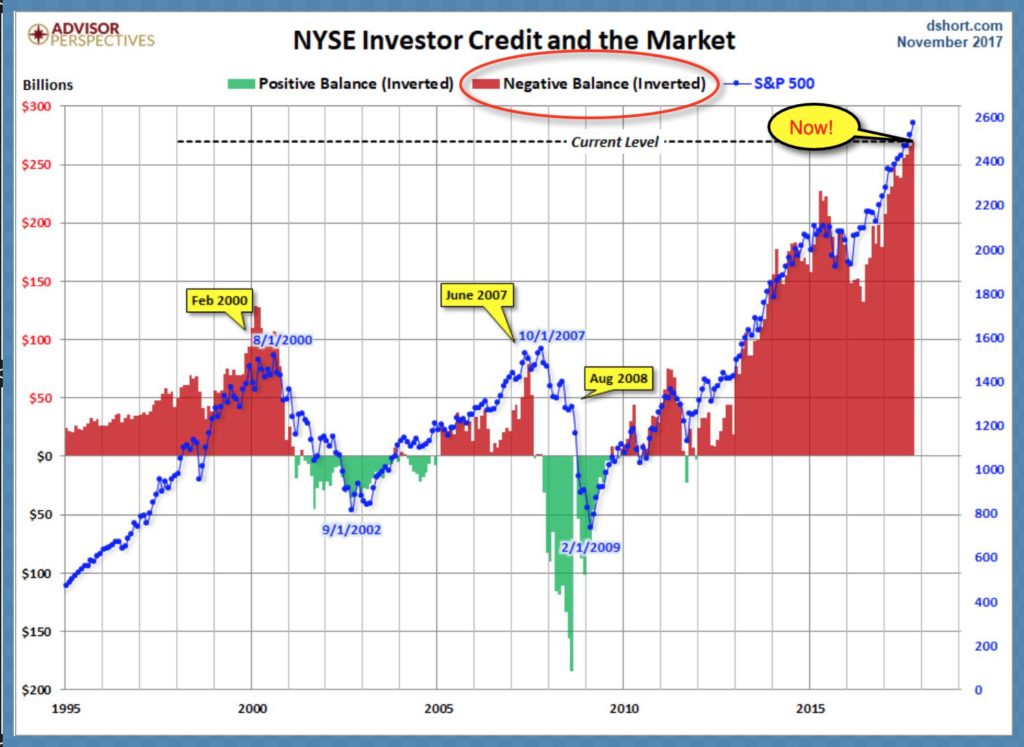It is typical of long bull markets, that holders fall in love with their holdings and consider capital gains as money in the bank (without actually cashing out and putting cash profits in the bank). Why would anyone sell rising assets when they can fund their spending through tax-deductible loans against their investment holdings in margin accounts, right? Why trigger capital gain tax, when you can have your assets cake and eat it too via borrowed funds?? Right? Well, because understand it or not, the source of the funds that we spend defines our longer term viability. Ask anyone who has lived through a few cycles in real time and learned from the experience. Spending via cash savings and income, versus spending borrowed funds, are world’s apart in the aftermath.
As shown in this chart of funds borrowed against investment accounts since 1995, the past 5 years of ‘free’ money injections into capital markets via central banks has successfully driven equity prices and the funds borrowed against them to all-time-record highs. Indeed, the tech bubble top of 2000 and the derivatives/credit bubble top of 2007, look positively placid in comparison to now.  This all matters. We know that the vast majority of people have not had pay raises sufficient to support their spending over the past decade, and have taken on record levels of consumer credit (auto, student, home, revolving) to sustain their consumption. Relatively speaking, the people using investment margin accounts are supposed to be the ‘have mores’ in the economy. And here we see that record funds have been borrowed to enable buying of securities, goods and services, for which spenders did not actually have the money. This highlights the dearth of cash presently held in the financial system. To pay debt back one needs cash and income. Barring large leaps in income, present debtors will need to sell assets to raise cash. As prices begin to mean revert lower, debt levels do not, which means forced selling will spread to harm the net worth of all holders (whether they are indebted or not).
This all matters. We know that the vast majority of people have not had pay raises sufficient to support their spending over the past decade, and have taken on record levels of consumer credit (auto, student, home, revolving) to sustain their consumption. Relatively speaking, the people using investment margin accounts are supposed to be the ‘have mores’ in the economy. And here we see that record funds have been borrowed to enable buying of securities, goods and services, for which spenders did not actually have the money. This highlights the dearth of cash presently held in the financial system. To pay debt back one needs cash and income. Barring large leaps in income, present debtors will need to sell assets to raise cash. As prices begin to mean revert lower, debt levels do not, which means forced selling will spread to harm the net worth of all holders (whether they are indebted or not).
As reminded by Lance Roberts today in Revisiting Bob Farrell’s 10-Rules:
Rule no 1: “Markets tend to return to the mean (average price) over time.
Rule no 2: “Excesses in one direction will lead to an opposite excess in the other direction.”


